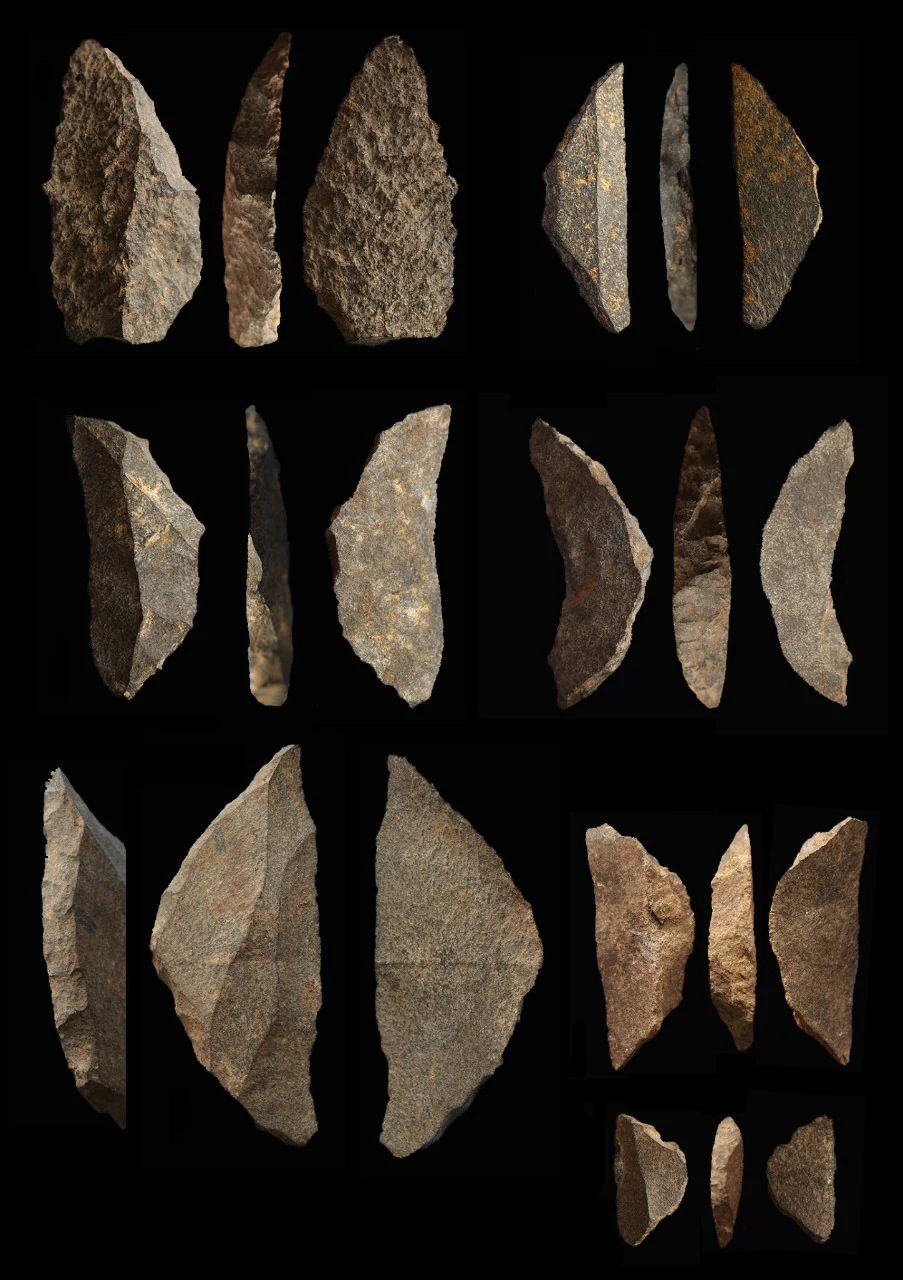Remarkably Similar Stone Age ‘Swiss Army Knives’ Found Across Africa Suggest a System of Prehistoric Mass Communication
The discovery in southern Africa of numerous ancient “Swiss Army” knives made from stone, all seemingly the same design, suggests widespread communication across the continent an astonishing 65,000 years ago, researchers argue in a new report.
The tools, which appear to have been fashioned in the same way in several instances, may even have been crafted from a shared template.
“While the making of the stone tool was not particularly difficult, the hafting of the stone to the handle through the use of glue and adhesives was, which highlights that they were sharing and communicating complex information with each other,” Paloma de la Peña, a senior research associate at Cambridge University’s McDonald Institute for Archaeological Research, said in a statement.
This week, an international team led by University of Sydney archaeologist Amy Way, who also runs the Australian Museum in Sydney, published a study on these prehistoric long-distance social ties in the journal Scientific Reports.
Map showing the location of the seven sites analyzed alongside a small selection of the stone tools. Map courtesy of NASA/JPL/NIMA. Drawings by M. Grenet and some photos courtesy of J. Deacon.
Researchers found an enormous number of these stone tools, referred to as Howiesons Poort blades, which were used for cutting, drilling, skinning, and other tasks.
Altogether, it’s the first evidence of modern homo sapiens communicating with each other across large geographic distances, maintaining social connections and sharing knowledge, despite living far apart.
“The really exciting thing about this find is that it gives us evidence that there was long-distance social connection between people, just before the big migration out of Africa, which involved all of our ancestors,” Way said.

Hornfels tools from the Sibudu Cave site in South Africa. Photo by Paloma de la Peña.
Although earlier groups of humans left Africa for Europe, migrations to the continent were not successful until 60,000 to 70,000 years ago—and it may have been stronger social ties that allowed communities of prehistoric people to continue to flourish as they moved across the globe.
“The main theory as to why modern humans replaced all the other humans living outside Africa around 60,000 70,000 years ago,” de la Peña told the Guardian, “is that our ancestors were much better at social networking than the other species, such as Neanderthals, who were possibly smarter and stronger as individuals, but not great at sharing information.”
Follow Artnet News on Facebook:
Want to stay ahead of the art world? Subscribe to our newsletter to get the breaking news, eye-opening interviews, and incisive critical takes that drive the conversation forward.
Credit: Source link



 Bitcoin
Bitcoin  Ethereum
Ethereum  Tether
Tether  Solana
Solana  USDC
USDC  Lido Staked Ether
Lido Staked Ether  XRP
XRP  Dogecoin
Dogecoin  Toncoin
Toncoin  Cardano
Cardano  Shiba Inu
Shiba Inu  Avalanche
Avalanche  Wrapped Bitcoin
Wrapped Bitcoin  TRON
TRON  Bitcoin Cash
Bitcoin Cash  Polkadot
Polkadot  Chainlink
Chainlink  Polygon
Polygon  Litecoin
Litecoin  NEAR Protocol
NEAR Protocol  Internet Computer
Internet Computer  LEO Token
LEO Token  Uniswap
Uniswap  Dai
Dai  First Digital USD
First Digital USD  Aptos
Aptos  Ethereum Classic
Ethereum Classic  Mantle
Mantle  Stacks
Stacks  OKB
OKB  Cronos
Cronos  Filecoin
Filecoin  Cosmos Hub
Cosmos Hub  Bittensor
Bittensor  Stellar
Stellar  Render
Render  Arbitrum
Arbitrum  Maker
Maker  Hedera
Hedera  dogwifhat
dogwifhat  Immutable
Immutable  The Graph
The Graph  Ethena USDe
Ethena USDe  Optimism
Optimism  Pepe
Pepe  Wrapped eETH
Wrapped eETH  Monero
Monero